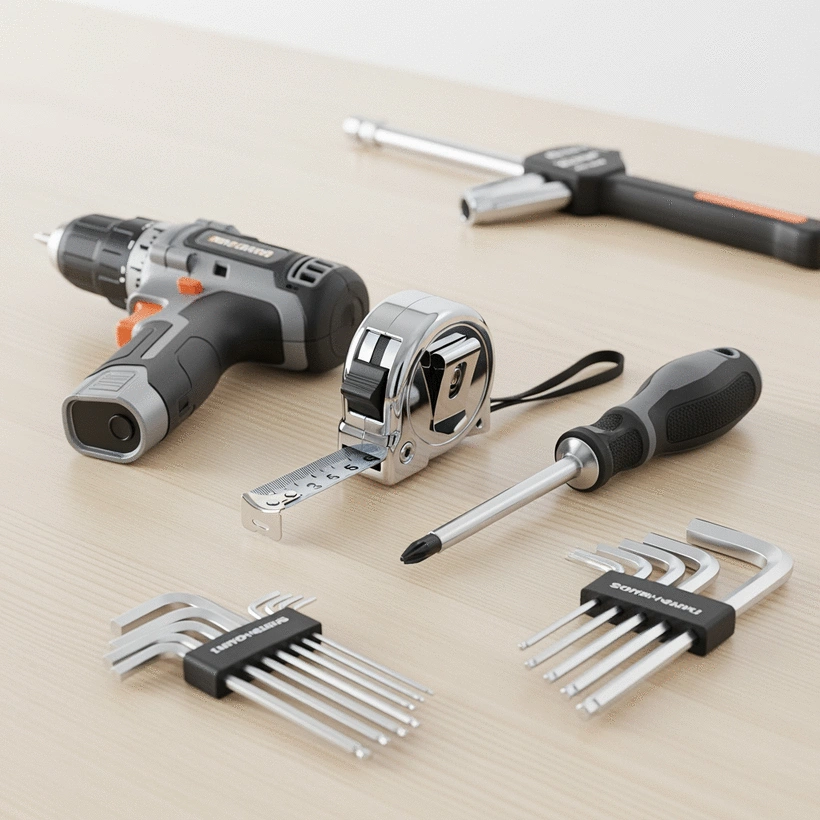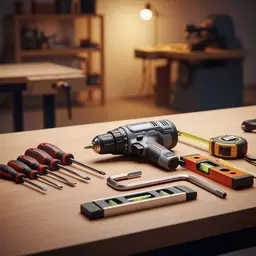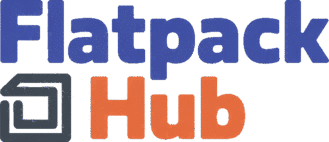Essential Tools for Flatpack Assembly

Considering a new flatpack project? With the right tools and techniques, you can transform what often feels like a daunting task into an enjoyable DIY experience. Here's what you'll learn to get started on your assembly journey!
What You Will Learn
- The importance of having the right tools to enhance efficiency and safety during flatpack assembly.
- Essential toolkits for 2025, including must-have manual and power tools.
- Step-by-step guidance for a successful assembly process, from reading instructions to organizing your workspace.
- Common challenges in flatpack assembly and practical solutions to overcome them.
- Safety measures and organization tips to create an efficient assembly environment.
- Emerging trends and innovations in flatpack assembly tools for the future.
- Factors to consider when choosing between DIY assembly and hiring professional help.
Key Tools for Flatpack Assembly in 2025
This visual outlines the essential toolkits and specific tools recommended for efficient and safe flatpack assembly, categorizing them by type and use. For more in-depth information on selecting the right equipment, explore our guide on essential tools for flat-pack furniture.
Overview: Must-Have Tools
IKEA FIXA Toolkit
- Screwdriver Set
- Hex Keys
- Rubber Mallet
- Measuring Tape
General Essentials
- Screwdriver Set (Phillips & Flathead)
- Hex Keys
- Rubber Mallet
- Tape Measure & Level
Manual Tools
- Screwdrivers: Phillips & Flathead
- Hex Keys: For secure tightening
- Rubber Mallet: Gentle nudging without damage
- Utility Knife: Quick packaging opening
Power Tools (Optional for Speed)
- Cordless Drill: Quick drilling & driving
- Power Drill: Versatile for various tasks
- Electric Screwdriver: Speeds up long projects
- Digital Calipers: Precise measurements
Future Innovations & Practices
Innovations
- Cordless Multi-Tools
- Smart Assembly Guides (AR)
Eco-Friendly Practices
- Eco-friendly Wood Glue
- Recyclable Materials
Understanding Flatpack Assembly in 2025
As we dive into the world of flatpack assembly in 2025, it’s essential to acknowledge how far we've come in making this task more manageable and enjoyable. Many of us have faced the daunting challenge of assembling furniture from a box, often feeling overwhelmed by a sea of parts and instructions. But with the right approach, flatpack assembly can be a breeze! One way to ensure a smoother experience is to have the proper tools at your fingertips.
Imagine beginning your assembly project without the tools you need—frustrating, right? Having the right equipment can turn a headache into a satisfying DIY experience. The right tools not only help you assemble your furniture more quickly, but they also reduce stress and minimize the chances of making mistakes. So, what tools should you consider to make your flatpack assembly journey enjoyable?
Why Proper Tools Make a Difference
Using the correct tools can significantly change the way you approach flatpack assembly. Here are some reasons why it's crucial:
- Efficiency: The right tools speed up the process and help you complete your project faster.
- Precision: Proper tools ensure that everything fits together as it should, reducing the need for adjustments.
- Safety: Using tools designed for the task can prevent injuries and accidents, making your project safer.
Consider the last time you assembled something without the right tools—it likely took longer and was filled with frustration. When you’re equipped with proper tools, assembly becomes a fulfilling experience rather than a chore. Plus, you'll finish with a sense of accomplishment, ready to enjoy your new furniture!
Essential Toolkits for Flatpack Assembly
Now that we understand the importance of having the right tools, let’s dive into what essential toolkits look like for 2025. A well-equipped toolkit can be your best friend during the assembly process, helping you tackle even the trickiest of flatpack furniture with ease.
One standout option is the IKEA FIXA tool kit. This versatile toolkit includes everything you might need for most flatpack assembly projects, making it a popular choice for DIY enthusiasts like us.
Overview of Must-Have Tools for 2025
- Screwdriver Set: A selection of Phillips and flathead screwdrivers.
- Hex Keys: Perfect for those pesky bolts that require a little extra torque.
- Rubber Mallet: Great for gently tapping pieces together without damaging them.
- Measuring Tape: Vital for ensuring everything fits perfectly in your space.
Having these tools in your arsenal can make a world of difference. You'll be able to tackle your flatpack furniture with confidence, knowing that you're well-prepared for whatever assembly challenges come your way!
Key Manual Tools for Efficient Assembly
In addition to having a toolkit, it’s vital to know which manual tools can help you during your assembly journey. Let’s explore some key manual tools you'll want to keep handy:
- Screwdrivers: Both Phillips and flathead screwdrivers are essential for handling various screw types.
- Hex Keys: These are particularly useful for tightening bolts securely.
- Rubber Mallet: Helps in gently nudging parts together without causing any damage.
By familiarizing yourself with these manual tools, you can approach each assembly step with the confidence that you'll handle any hiccups that come your way. And trust me, having these tools will make your assembly experience feel much more manageable!
Incorporating Power Tools for Speed and Efficiency
If you're looking to take your assembly skills to the next level, you might want to consider incorporating some power tools into your toolkit. While they aren't always necessary, they can certainly save you time and effort:
- Cordless Drill: Perfect for quickly drilling holes and driving screws without the hassle of cords.
- Power Drill: A versatile tool that can handle different tasks, from drilling to screwing.
- Electric Screwdriver: Great for speeding up the assembly process, especially for those long projects.
Power tools aren't just about speed—they also help ensure that everything is assembled securely and accurately. If you're someone who frequently tackles flatpack projects, investing in a few quality power tools can make a significant difference!
Step-by-Step Assembly Guidance
Now that we've explored the tools you'll need, let’s move on to the assembly process itself. Following a structured approach can help ensure that you assemble your furniture correctly and efficiently. For a comprehensive guide on making the process smoother, refer to our guide to assembling flatpack furniture.
Here’s a general outline of the flatpack assembly process:
- Read the Instructions: Familiarize yourself with the assembly guide and parts included.
- Organize Your Workspace: Clear a space where you can work comfortably, laying out all the parts and tools.
- Gather Your Tools: Make sure you have all the necessary tools within reach.
- Follow Each Step: Take your time to follow the instructions carefully, ensuring each piece is assembled correctly.
Remember, patience is key! A methodical approach can prevent mistakes that might require redoing parts of your assembly. And don't hesitate to consult the instructions whenever you're uncertain—it's better to double-check than to guess!
Common Challenges and Their Solutions
During the assembly process, you may encounter some common challenges. Here are a few issues you might face and how to overcome them:
- Missing Parts: Double-check your parts list and reach out to the manufacturer if something is missing.
- Difficulty Aligning Pieces: Use a rubber mallet gently to help pieces fit together snugly.
- Stripped Screws: If you’re having trouble with screws, ensure you're using the right type of screwdriver.
Having the right tools can help mitigate many issues you might face during assembly. For example, keeping a utility knife handy can help you open packaging quickly and efficiently, eliminating some of that initial frustration!
Prioritizing Safety and Organization
Safety should always be a top priority when engaging in any DIY project, including flatpack assembly. Ensuring you have the right protective gear can minimize risks and keep you safe throughout the process.
Additionally, organizing your workspace is crucial for a smooth assembly experience. Here are some tips to create a safe and efficient environment:
Protective Gear for a Safe Assembly Experience
- Gloves: Protect your hands from splinters and sharp edges.
- Safety Goggles: Shield your eyes from dust and debris.
- Dust Masks: Ideal for maintaining air quality when working with materials that create dust.
By equipping yourself with protective gear, you not only safeguard your health but also set the right tone for your assembly project. Safety first!
Organizing Your Workspace and Tools
Keeping your tools and parts organized can save you a lot of time and frustration during the assembly process. Here are a few methods to consider:
- Tool Belts: Keep essential tools close at hand.
- Storage Bins: Use bins to sort and store screws and small parts separately.
- Screw Organizers: These can help you keep track of different screws and fasteners.
Planning your assembly space effectively will help you stay focused and organized. A clutter-free environment allows you to concentrate on the task at hand and makes the assembly process much more enjoyable!
Future Trends in Flatpack Assembly Tools
As we look ahead to the future of flatpack assembly, there are exciting innovations on the horizon that could enhance our assembly experiences. Let’s explore some of these emerging tools and trends!
Innovations to Look for in 2025
2025 is set to bring some fascinating tools and smart technologies that could revolutionize flatpack assembly:
- Digital Calipers: These can help ensure precise measurements and fit.
- Cordless Multi-Tools: A versatile option that combines multiple tools in one handy device.
- Smart Assembly Guides: AR technology could provide step-by-step guides right in your field of vision!
Keeping an eye on these innovations can help you stay ahead in your DIY projects and embrace new technologies that make assembly even smoother.
Eco-Friendly Tool Options and Practices
Finally, let's not forget about sustainability in tool selection and assembly practices. As DIY enthusiasts, we should aim to be conscious consumers:
- Wood Glue: Consider using eco-friendly adhesives that minimize environmental impact.
- Recyclable Materials: Choose tools and materials that can be recycled at the end of their life. For more information on responsible disposal, check out how to recycle flatpack furniture sustainably.
- Energy-Efficient Tools: Opt for tools that consume less power, reducing your carbon footprint.
By prioritizing eco-friendly practices, we can contribute to a more sustainable future while enjoying our flatpack assembly projects. Let’s think green as we create our stylish, functional living spaces!
We Want to Hear From You!
What has been your biggest challenge with flatpack assembly? Is it finding the right tools, understanding the instructions, or something else entirely? Share your thoughts below:
FAQs About Flatpack Assembly
Evaluating Your Assembly Options: DIY vs. Professional Help
When it comes to putting together that flatpack furniture, you might find yourself pondering: should I do it myself or hire a professional? This decision can have a big impact on both your wallet and your stress levels! On one hand, taking the DIY route can be incredibly rewarding, allowing you to engage directly with your project. However, it's essential to weigh the advantages and potential drawbacks before diving in.
Here's a quick breakdown of the key factors to consider when deciding if DIY assembly is right for you:
- Cost: Doing it yourself is often cheaper, especially if you already have the necessary tools.
- Time: Keep in mind that assembling furniture can take time—sometimes longer than expected!
- Skill Level: If you're confident with tools and instructions, you'll likely enjoy the process. However, if you find instructions overwhelming, hiring help might be better.
Don’t forget about furniture assembly services! They can save you time and hassle, especially if you have a busy schedule or if the assembly seems complex. It’s all about finding the right balance for your situation!
When to Consider Professional Assembly Services
There are times when hiring a professional might be the smartest choice. Here are some scenarios where it makes sense:
- Complex Designs: If the flatpack furniture has multiple intricate pieces or functions, professionals can streamline the process.
- Time Constraints: If you're short on time or have a tight deadline, a professional service can get the job done efficiently.
- Lack of Tools: If you don’t own the necessary tools, it may be more cost-effective to hire someone rather than buy or rent.
Ultimately, the choice between DIY assembly and hiring professionals hinges on your unique circumstances. As someone who loves tackling DIY projects, I can assure you that every assembly brings its own challenges, but it’s equally rewarding to see your hard work pay off!
Final Thoughts on Preparing for Your Next Assembly Project
Building Your Ideal Toolkit
As we wrap up this discussion, I want to encourage you to take a good look at your current tools. Are they up to par for your next flatpack assembly adventure? Investing in a solid toolkit can make a world of difference. Here are some essential items to consider:
- Tape Measure: Perfect for ensuring everything fits just right!
- Level: No one wants a wonky bookshelf!
- Screwdriver Set: A variety of sizes will help you tackle almost any screw type.
- Utility Knife: Handy for opening boxes and trimming excess packaging.
Having these tools on hand will not only make your assembly smoother but also more enjoyable. Remember, preparation is key!
Taking Action: Start Your Flatpack Assembly Journey
Now that you're armed with knowledge and tools, it’s time to take action! I’d love to hear about your experiences with flatpack assembly—what challenges have you faced? Have you tried any of the tips shared here? Feel free to drop your questions or tips in the comments below. Together, we can build a community that thrives on sharing useful information and inspiring each other to tackle our DIY projects with confidence! Happy assembling!
Recap of Key Points
Here is a quick recap of the important points discussed in the article:
- Having the right tools makes flatpack assembly efficient, precise, and safer.
- Essential toolkits for 2025 should include a screwdriver set, hex keys, rubber mallet, and measuring tape.
- Incorporating power tools can enhance speed and accuracy in the assembly process.
- Follow a structured approach: read instructions, organize workspace, gather tools, and take your time during assembly.
- Safety gear such as gloves and goggles is important for a secure assembly experience.
- Stay organized by using tool belts and storage bins to keep parts and tools accessible.
- Consider professional assembly services for complex designs or when short on time.








